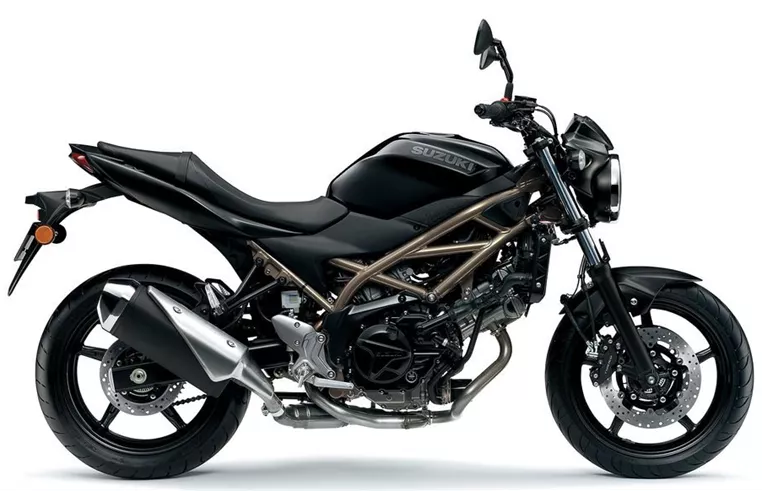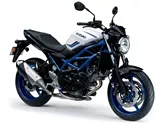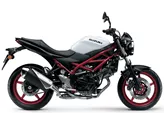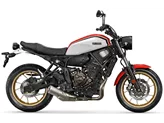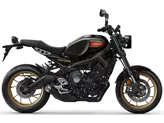Suzuki SV 650 2021 vs. Yamaha XSR900 2018
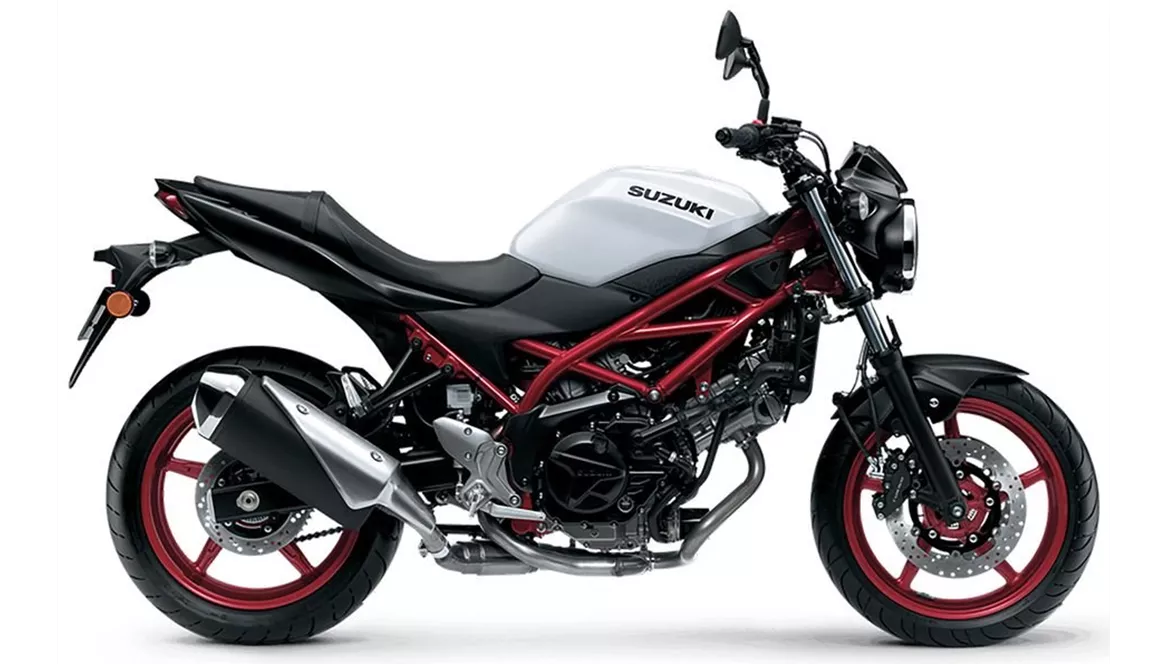
Suzuki SV 650 2021

Yamaha XSR900 2018
Visão geral - Suzuki SV 650 2021 vs Yamaha XSR900 2018
In terms of technical specifications, the Suzuki SV 650 2021 is equipped with a V-twin engine that delivers 73 horsepower and 64 Nm of torque. It has a displacement of 645cc and features liquid cooling. The bike has a 2-cylinder configuration and is equipped with a telescopic fork front suspension and a swingarm rear suspension with a monoshock. The frame is made of steel and the front brakes are dual disc with a diameter of 290mm. The bike also features ABS as an advanced rider assistance system. The front tire width is 120mm with a diameter of 17 inches, while the rear tire width is 160mm with a diameter of 17 inches. The bike has a wheelbase of 1445mm, a seat height of 785mm, a curb weight of 200kg (with ABS), and a fuel tank capacity of 14.5 liters.
On the other hand, the Yamaha XSR900 2018 is equipped with an inline triple engine that delivers 115 horsepower and 87.5 Nm of torque. It has a displacement of 847cc and also features liquid cooling. The bike has a 3-cylinder configuration and is equipped with a telescopic upside-down front suspension and a swingarm rear suspension with a monoshock. The frame is made of aluminum and the front brakes are dual disc with a diameter of 298mm. Like the Suzuki, the Yamaha also features ABS as an advanced rider assistance system. The front tire width is 120mm with a diameter of 17 inches, while the rear tire width is 180mm with a diameter of 17 inches. The bike has a wheelbase of 1440mm, a seat height of 815mm, a curb weight of 191kg (with ABS), and a fuel tank capacity of 14 liters.
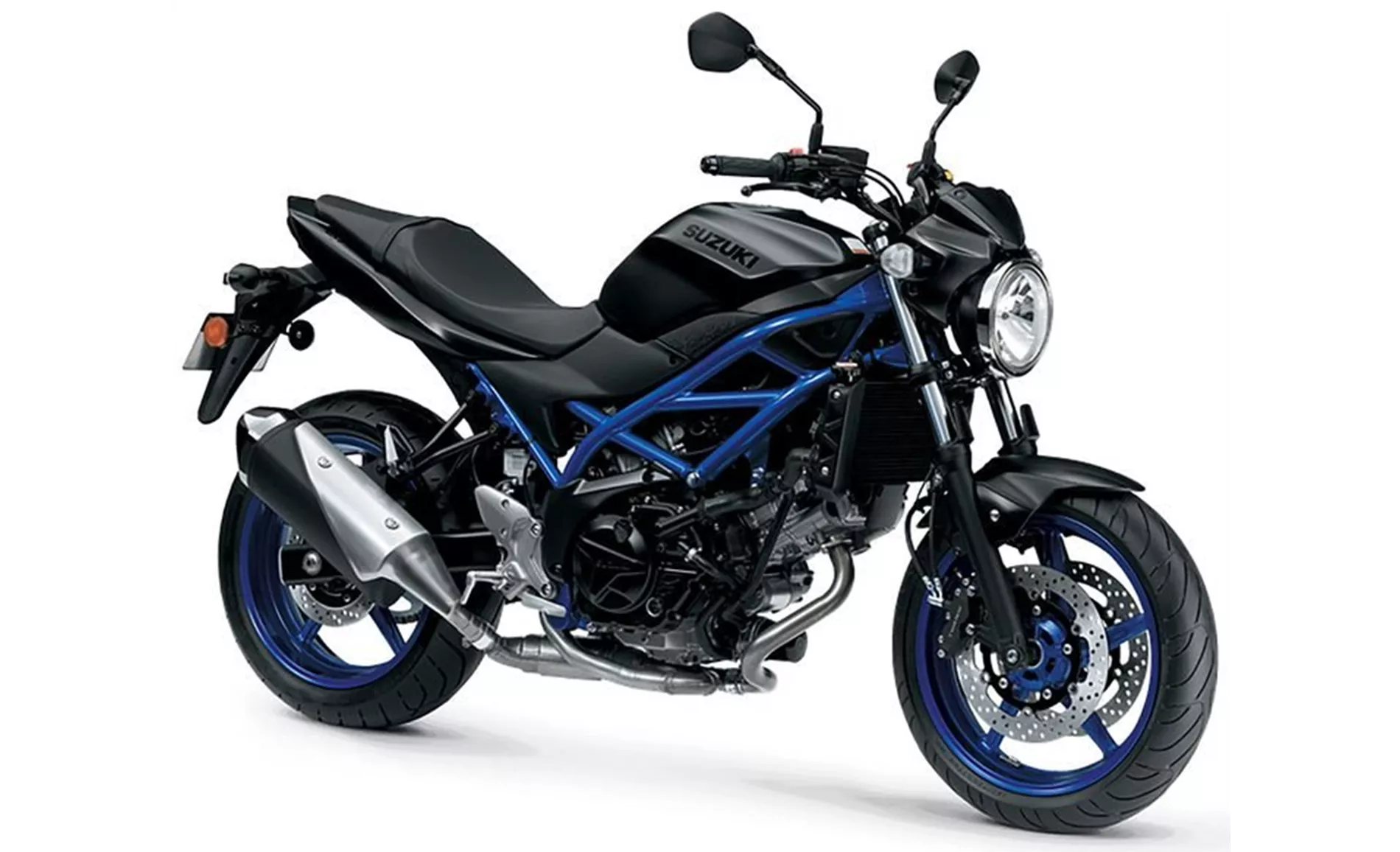
Suzuki SV 650 2021
In terms of strengths, the Suzuki SV 650 2021 is praised for its confident and characterful V-twin engine, stable chassis, comfortable seating position, easy handling, and timeless design. On the other hand, the Yamaha XSR900 2018 is praised for its extremely sporty and high-speed engine, excellent brakes, naked bike-level performance, pleasant seating position, high-quality finishes, and good value for money.

Yamaha XSR900 2018
However, the Suzuki SV 650 2021 does have some weaknesses. The brake requires manual force, there is no additional electronic features besides ABS, and the instrument panel is moderately legible. On the other hand, the Yamaha XSR900 2018 has a nearly too direct response and its retro style is not thought out to the last detail.
In conclusion, both the Suzuki SV 650 2021 and the Yamaha XSR900 2018 have their own strengths and weaknesses. The Suzuki offers a confident and characterful V-twin engine with easy handling and a comfortable seating position, while the Yamaha provides an extremely sporty engine with high-speed performance and excellent brakes. Ultimately, the choice between the two will depend on the rider's preferences and priorities.
Especificações técnicas Suzuki SV 650 2021 em comparação com Yamaha XSR900 2018
Prós e contras em comparação
Prós e contras em comparação
Suzuki SV 650 2021
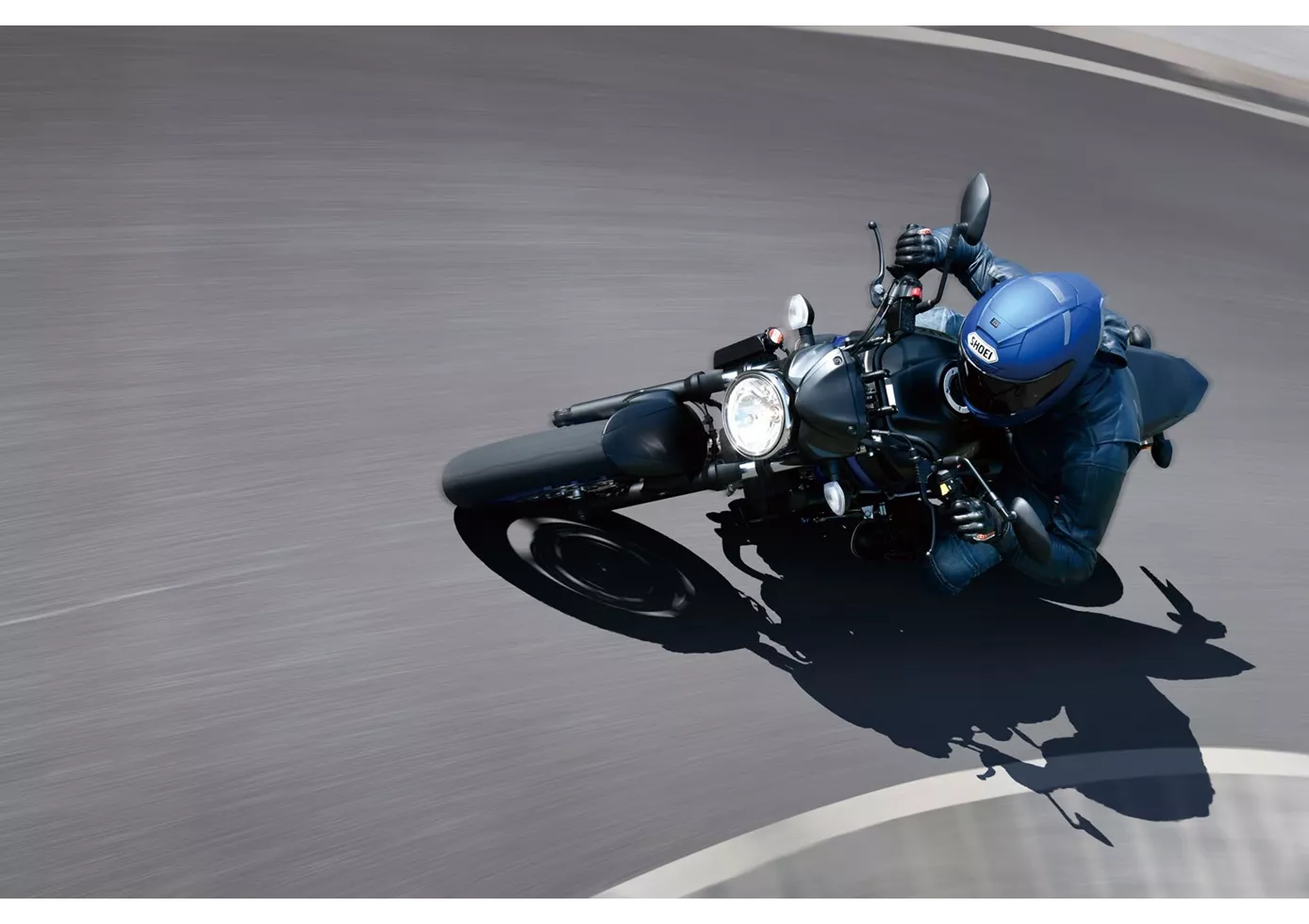
Não mudou muito na Suzuki SV 650 em comparação com a sua antecessora de há cinco anos. O motor foi atualizado para Euro5 e está agora ainda mais maduro, o que se enquadra perfeitamente no resto do conjunto. A SV 650 não quer assustar ninguém, especialmente os principiantes. O chassis dá uma impressão sólida e sem agitação, os travões requerem muita força manual para evitar travagens excessivas inesperadas. O aspeto é intemporal, por um lado, mas por outro lado, alguns componentes estão realmente um pouco ultrapassados. Por outro lado, o preço é justo, como é habitual na Suzuki.
Yamaha XSR900 2018

A Yamaha XSR900 é uma ilusão de ótica clássica - com o seu farol redondo, depósito angular e farolim traseiro acoplado, passa claramente por uma moto retro. Mas não é por acaso que o desempenho faz lembrar a potente naked de gama média Yamaha MT-09, que é a base extremamente desportiva da XSR900. Assim, o motor é uma explosão e os travões são apropriadamente venenosos. Felizmente, os engenheiros não exageraram com o chassis, a XSR900 oferece conforto suficiente e a posição de condução vertical é mais confortável do que o potente motor levaria a esperar. Em suma, a XSR900 é um dos modelos mais desportivos entre as motos retro.
Comparação de preços Preço médio de mercado Suzuki SV 650 vs Yamaha XSR900
There are a few key differences between a Suzuki SV 650 2021 and a Yamaha XSR900 2018. In terms of price, the actual average price of a Yamaha XSR900 2018 is about 31% higher. A Suzuki SV 650 2021 experiences a loss of 160 EUR in one year and 640 EUR in two years of ownership. This is offset by a loss of 220 EUR and 140 EUR for a Yamaha XSR900 2018. Compared to Yamaha XSR900 2018 there are more Suzuki SV 650 2021 bikes available on the 1000PS.de Marketplace, specifically 13 compared to 4. It takes less time to sell a Suzuki SV 650 with 111 days compared to 123 days for a Yamaha XSR900. Since model year 2005 1000PS.de editors have written 25 reviews for the Suzuki SV 650 and 30 reviews for the Yamaha XSR900 since model year 2016. The first review for the Suzuki SV 650 was published on 26/09/2008 and now has more than 14 200 views. This compares to more than 17 600 views for the first review on Yamaha XSR900 published on 25/11/2015.




